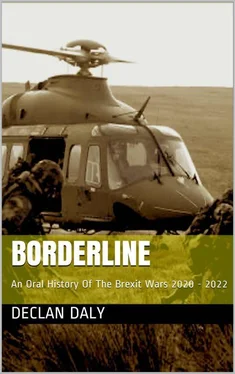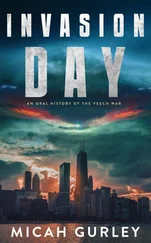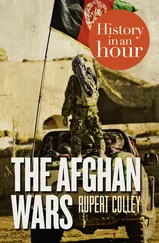Once night fell, we were called back to Finner and it was left to the ISR aircraft to track targets where they could, but it was still a case that we couldn’t account for all of them – we still didn’t know how many had gone across the border or if there was still a significant force out there heading for the airport and why? Were they expecting an extraction? By who?
Anyway, it made no difference for us. We thought we might get a rest but no, 28 Bn and 2 Cav were out of position to provide troops for air ops, they were busy moving west on the ground. So, lucky us, we got to move by heli again, this time around the coast and all the way up to the airport to reinforce the reserve platoon. They were apparently losing their minds listening to everything that was happening by way of piecemeal briefings coming their way. They were apparently given a ‘be prepared to’ order to blow up the facilities there, which was then rescinded and then reordered again. So it was back on the Chinooks.
Their crews looked dead on their feet as well, they’d been flying in reservists from wherever they could get them since the start of the operation. The AW139s were apparently flown out and needed to be serviced. Something to do with having all of them operational at once ruining a maintenance plan, according to one of their pilots. I couldn’t relly follow what he was talking about to be honest, we were both wrecked. We were assured we’d have two back in the morning. Two, like, out of a whole fleet.There was one still on medevac standby in Finner, along with two EC135s that were doing mostly local patrolling by then.
So, we landed in the airport in a couple of runs, the first one brought all of what we had left of TG Viking, at this point down to two full Coys plus one and a bit platoons. The second wave brought in a company of reservists. The guys at the airport were well on edge by that point and I’m nearly surprised we weren’t fired on when we approached, they’d been hanging out on their own there for the week and were starting to jump at shadows. The new reserve guys that we brought in, well lets just say they took a bit of organising. I don’t want to seem like I’m going to town on them, it’s just… this was the first time that I personally saw where the chunks had been cut out of their training, I’ll put it that way. These guys who were absolutely top of their game in small unit patrolling, four person squads, you know, up to a section of nine. But put them into a bigger formation and they weren’t used to it, didn’t always know what to do or where to be. They hadn’t been trained for it and, really this was not the time to have to learn. It was a long night getting set up, but we got there.’
As the night of D+2 drew on, a firmer grasp of the situation was coming into view. The Carsonites remaining, judged now to be between eighty and one hundred, had managed to escape and evade in small groups as far west as a place called Mullaghderg Mountain, a rocky outcrop between the N56 and R259 roads and only three and a half kilometres from Donegal Airport in a straight line. It was as far as they would go. Two more airstrikes during the night had fixed them in place, giving time for the weary troops of 28 Bn and 2 Cav to make their way into position around them to the South and West, with TG Viking and the reserve units to their north east. As day broke, they had nowhere to go.
D+3
All morning, calls for surrender were being met with rifle fire, with the heavy weapons seemingly having been abandoned or out of ammunition. The position of the Carsonites at this time was clearly untenable, but they were nevertheless still a force that could pose lethal risk. The area was one that could be costly for a straightforward infantry attack. At all levels, the country had it’s fill of costly battles. Necessity was one thing, but this battle was one that the enemy was choosing for their own reasons, maybe to go down fighting, maybe to just take as many with them as possible. It was decided at DFHQ, not, in this case to oblige.
Lt Eamonn ‘Rover’ Byrne
‘Costa was not happy when she heard, she’d been on CAP most of the night, otherwise it would’ve been her. We’d swapped shifts because she needed the night flying currency, you need to fly a certain amount a month in different flight regimes and she needed some night work. But that’s how it goes. It was actually one of the French guys who came up with the idea, not specifically for this mission but in general to get us bombing. The pressure was coming on from on high to get us in the fight supporting the land component, obviously we didn’t have the training done for it so we had to come up with something.
What he came up with was that we’d basically be the bomb truck, hauling weapons for someone else. We’d tuck in on the wing of a Rafale with two, five hundred pound, laser guided bombs. The Rafale would use it’s pod to designate the target and we’d drop when he gave the word. As he said, ‘the bomb doesn’t care where its dropped from as long as it sees the laser.’ Apparently it worked well enough for them in the Sahel with Mirage jets, that’s where he’d seen it before. So, this became the plan. Myself and the boss were flying around, each paired up with a Rafale, waiting for the call. The bosses flight was just hooking up on the tanker, like, literally the exact moment when they couldn’t come back in when the task came through to us in the afternoon. We were already practically overhead, we’d made a point of making noise over them all day, so we actually had to extend back out to the west to make our run.
Apparently, they had decided in HQ that this was it, no more offers of surrender just to get shot at in return. This wasn’t exactly a warning shot, apparently the direction was ‘pick a small group and take them out’ or words to that effect. 28 Bn supplied the coordinates, which were duly dialled up by the pilot of the Rafale. We tipped in high from about twenty thousand, shallow dive angle. I’ll be honest, I was just working hard on staying as close in formation as I could and not messing that up. I actually missed the reticule appearing on my head up display in front of me saying ‘there’s a target being designated for you’. I just held the formation and when the lead said release, I released.
He levelled off and turned away to the south, still tracking the target. I broke off to the left and climbed. I’m not going to lie, I rolled passed ninety degrees angle of bank to look up through the canopy at the ground to see the impact. Big flash of brown dirt being thrown up, but I didn’t make out much else, no huge explosion. I went back to just flying the plane at that stage and rejoined with the lead. The boss was off the tanker at that point and steaming back in, so it was pretty clear we wouldn’t get another shot if it came up. We headed off to the tanker then for fuel when the bosses flight replaced us. I believe we’d just plugged in when the surrender came through. And that was it, the first Irish Air Corps airstrike of the new jet age and the most historic since Fitzmaurice shot up Fermoy.'
◆◆◆
The bombing of the this one target was not unique, the French had already carried out several attacks as already described. What was different was that it was an Irish aircraft dropping the weapon. It was presented in the media as an Irish airstrike with suitable pictures of a bombed up Gripen departing Shannon, and a comparison shot of one returning with one wing lacking a weapon. The fact that this was not yet a mature capability that could be delivered without French assistance was glossed over to create the desired impression: the Air Corps could now carry out close air support without fear of shoulder launched surface to air missiles, using weapons far more accurate and effective than the unguided rockets launched from the vulnerable PC-9s.
Читать дальше












